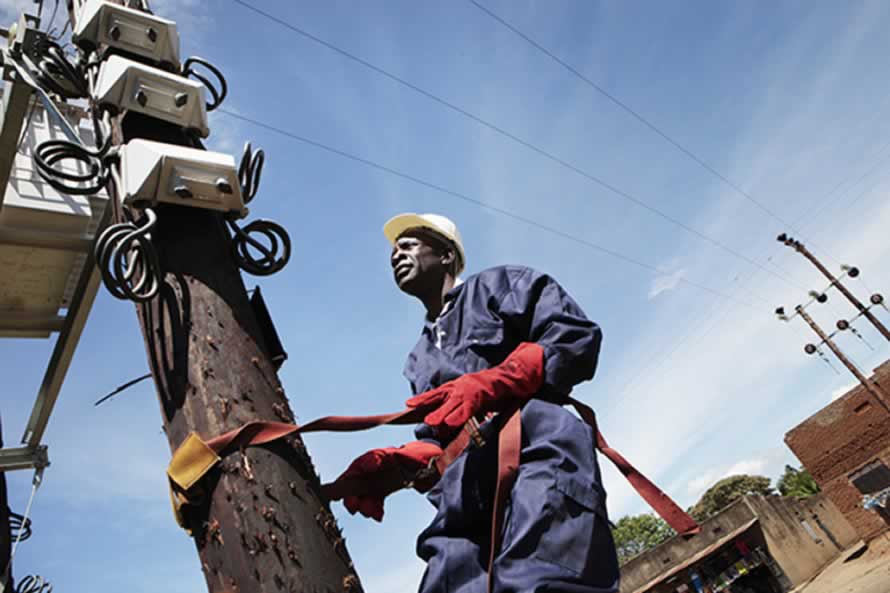
The Sunday Mail

 The Rural Electrification Agency was formed as a direct result of the Government’s rural electrification programme which sought to extend the electrical grid into rural areas.
The Rural Electrification Agency was formed as a direct result of the Government’s rural electrification programme which sought to extend the electrical grid into rural areas.
The Rural Electrification Fund (REF) was established through an Act of Parliament (Chapter 13:20) of 2002.
This subsequently led to the establishment of the Rural Electrification Agency (REA), whose main focus was to spearhead rapid and equitable electrification of rural areas in Zimbabwe.
However, the electrification drive into the rural areas seems to have stalled with indications the country’s rural areas remain in the dark.
Most people in rural Zimbabwe have given up hope of being connected to the national grid and are already exploring other alternative means of energy.
Initially, REA’s electrification move into the rural areas was supposed to be driven by two complementary components, namely the Expanded Rural Electrification Programme (EREP) and the Electricity End-Use Infrastructure Development (EEUID).
Under EREP, rural public institutions such as schools, clinics, Government extension offices were suppose to benefit under a 100 percent capital subsidy implying that the whole process of bringing the power line to the target was catered for by the agency, while other rural electrification programmes were levied with a 60 percent capital subsidy.
Under the EEUID programme, rural communities were supposed to be empowered socio-economically by the promotion of productive use of electricity in irrigation and other cottage industries.
Funding
Initial arrangements for the funding of REA activities and programmes were supposed to be undertaken under an array of funding mechanisms which included levies, loans, grants and fiscal allocations from the Government.
However, the bulk of REA funds for its programmes was supposed to be the 6 percent levy, levied on all electricity consumers in the country.
What has gone wrong with REA?
Allegations of corruption coupled with a lack of funding from the fiscal authorities are believed to have stalled the operations of REA countrywide.
Recently, it was reported that the board and management of the Rural Electrification Agency (REA) was embroiled in a US$4 million scandal. It is alleged that the bosses extended to themselves and other well-connected individuals loans amounting to close to US$4 million.
The agency admits that the major issue hampering their operations countrywide remains the issue of funding, where the 6 percent collected by ZETDC from electricity consumers is not adequate to meet their rural electrification needs.
The agency said it had a budget of US$37 million in 2013, while this year it hopes a total US$443 million will be availed to fund its operations.
REA marketing and public relations executive Mr Johannes Nyamayedenga said contrary to some perceptions, their mandate was to provide diverse forms of energy to the rural folk outside the electricity grid.
“We also link rural institutions to other diverse forms of energy such as solar energy, bio-gas energy, mini hydro electricity projects and any other energy solutions available,” he said.
Mr Nyamayedenga said REA had electrified over 7 730 rural public institutions since its inception in 2002.
He said by February 2014, the agency had completed 51,7 percent of the electrification of rural primary schools, 89,8 percent of secondary schools and 83,9 percent of rural health centres.
“We have also covered 97,8 percent of the electrification of Government extension offices, while 81,9 percent of the chiefs’ homesteads have been electrified,” said Mr Nyamayedenga.
He said the company had electrified 898 business centres, 677 small-scale farmers’ homesteads and 1 058 villages.
Mr Nyamayedenga said as a long-term solution for rural electrification, the agency initiated a new pole treatment plant in Mutare.
He said the plant will produce 100 000 transmission poles per annum of which 20 percent will be directed towards the speeding up of the programme, while 80 percent will be sold locally and regionally to complement the 6 percent ZETDC levy.



